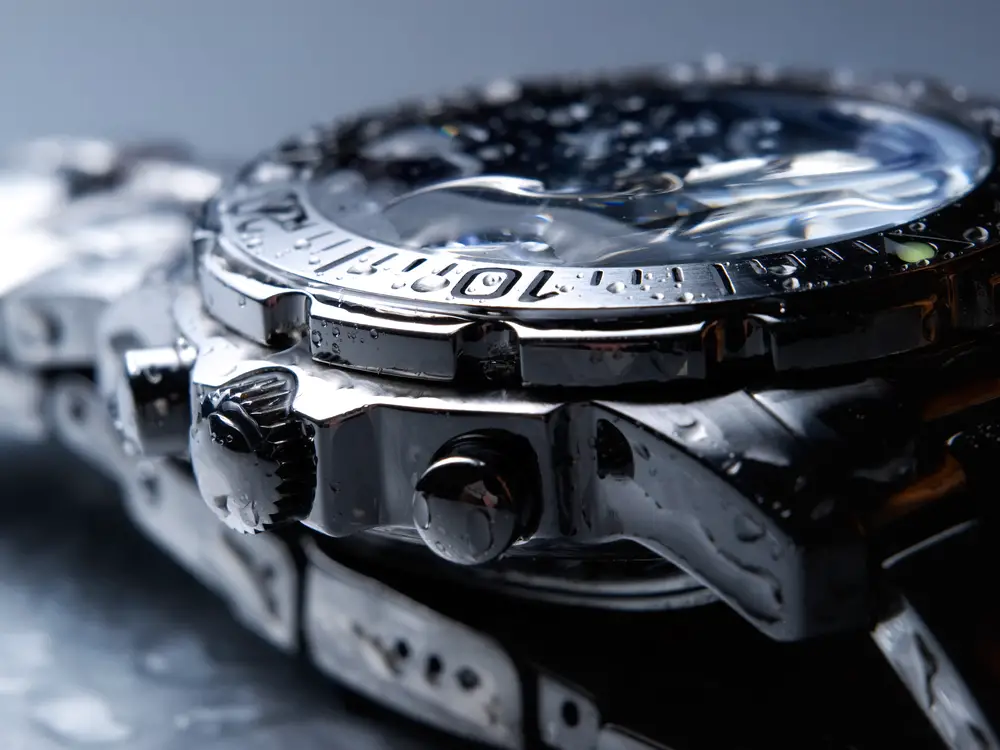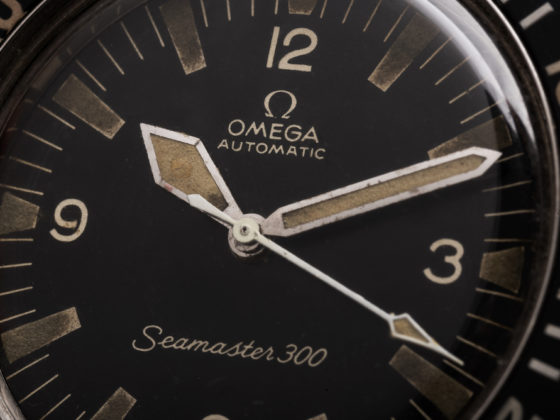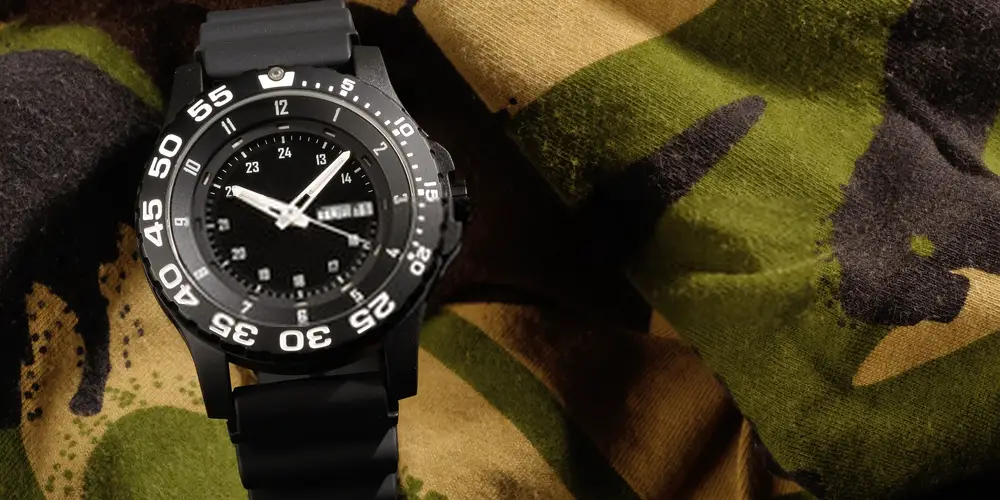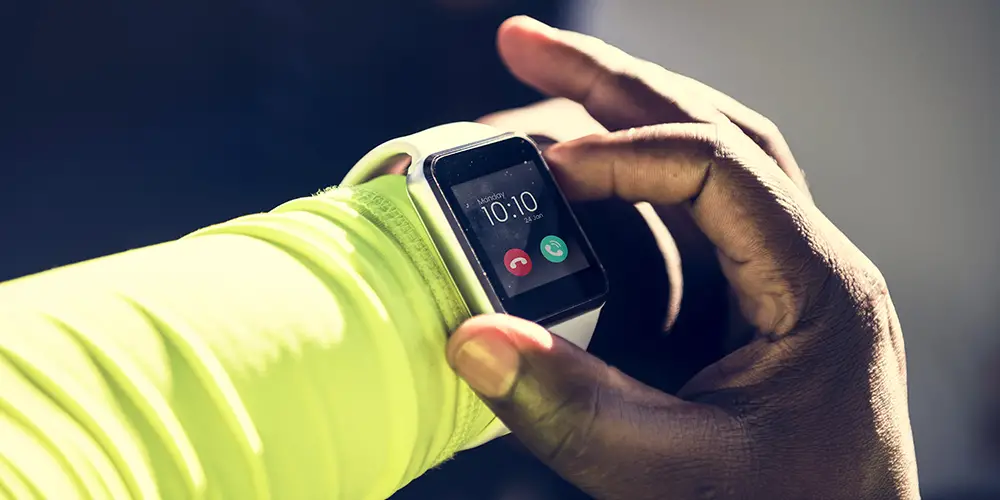[toc]
Water-resistance is not something everyone associates with watches, and it might come as a surprise that many modern timepieces are now water-resistant or waterproof. When you set out to find the perfect watch, this is something you’ll want to take into consideration.
You need to figure out whether a water-resistant watch is something that would benefit you. To do so, you first need to understand what water-resistant watches are, how they work, and why many users might prefer them. That’s what this water-resistance guide is for.
We’ll have a quick look at what defines water-resistant watches, and what you need to know before you dive into the ocean of timepieces with the hopes of finding the right one.
What is a Water-Resistant Watch?
Water damage can be devastating for a timepiece. Imagine you’ve spent hundreds of dollars on a beautiful Raymond Weil, a Nomos Glashütte, an Audemars Piguet, or a Patek Philippe watch, only for it to get ruined when it makes contact with water. Watch-makers don’t want this to happen either, and that is why most quality timepieces today have at least some grade of water-resistance.
A water-resistant watch is constructed in a way that protects it from humidity and moisture. This means you won’t have to worry if you get caught in a rainstorm when you wash your hands, or if you sweat a lot when exercising. A water-resistant timepiece is supposed to be able to handle this. How water-resistant a watch is can be seen in the product specifications, as the watch manufacturers usually have every watch tested to establish an accurate water-resistance watch rating.

Waterproof vs. Water-resistant
It’s easy to confuse terms like “waterproof” and “water-resistant,” but these are two very different things when it comes to watches. Water-resistant timepieces are suitable for everyday use and should be fine if you accidentally spill water on it, but it doesn’t mean you should actively try to get the watch wet. Picture a waterproof jacket.
It’s likely to keep you dry while walking home from work in the rain, but will it offer equally good protection if you fall in a lake or deliberately jump in a pool with your clothes on? Probably not. The same goes for most water-resistant watches; they can handle humidity and the occasional spill, but you should not fully submerge it in water.
Waterproof watches, on the other hand, are designed and constructed for different purposes. These are the kinds of timepieces you can wear when you go swimming or diving, or that you can leave on your wrist while taking a shower.
Many athletes use waterproof watches for water activities, as these can help document and analyze their performance in the water. These types of waterproof watches are often referred to as fitness watches, and well-known product examples of these include the Grand Seiko and the Apple Watch.
Water-resistance Rating & Depth Ratings
Water-resistant watches have ratings, and you’ll begin to see numbers like 30 meters, 50 meters, 100 meters, and even 200 meters. These are numbers that indicate how much pressure a specific watch can handle when immersed in water. A 30-meter water-resistance rating is just that: a water-resistant watch made to handle the occasional water spill or splash, but not full submersion for a lengthy period.
For a watch with a 50-meter depth rating, you can fully submerge the watch in water for a short amount of time, but not swim with it. This is because swimming ups the water pressure. A 100m sports watch usually qualifies for a quick swim in shallow waters, and any number higher than that (200, 250, etc.) is simply an indication of its water pressure tolerance, and not of how deep down in the water you can go.
Watch Materials
Surprisingly, it’s not so much about the materials that make up a watch, not when it comes to water-resistance, and what matters is how well it’s been sealed to prevent water from leaking in. When shopping for men’s and women’s watches, it’s important to have a quick look at any water-resistance test results, to make sure resistance testing has been done.
Any watch can look sporty and heavy-duty, but it doesn’t mean it can handle water sports. A mechanical watch, with a crown and pushers, watch winders, or with screw-down crowns and a leather strap, can be highly water-resistant. But looks can be deceiving if you think all sport’s watches are water-resistant, when in fact, it depends entirely on the construction and how well it’s been sealed.

Rotary Dolphin Standard
An advanced search for the best water-resistant watch is likely to put you in contact with a term you might have never heard before: Rotary Dolphin Standard. What does this mean, and how is it relevant for your purchase? Watch buying can be tricky for beginners, but this is a specification set in accordance with the International Organization for Standardization.
If a watch has ‘Dolphin Standard’ engraved or printed on it, this means you can safely use your new timepiece for swimming, diving, and any other water activity except for scuba diving. These types of diving watches are fun to use, as a full immersion won’t cause any issues at all.
How to Care for a Water-Resistant Watch
Once you have one, it’s essential that you take proper care of it to make sure it’ll last for many years to come. If you do get your watch wet, it’s a good idea to wipe it off after every use, regardless of whether it’s fully waterproof. This will remove any additional moisture to keep it safe and in perfect condition. If your watch is waterproof, and you opt for swimming with it in pool water or salt-water, you should always rinse it off afterward, to prevent any problematic build-ups.
If you find yourself in a situation where you need to have your diver’s watch repaired, or the battery exchanged, you should always take it to a professional. Someone with knowledge can have a look to make sure all seals remain unbroken so that no water can get in.
Final Words
It’s not hard to find a quality watch with water-resistant features today, and it’s something worth keeping an eye out for if you’re not shopping for a new timepiece. It keeps your investment safe and means you won’t have to double-charge your credit card to get a new one if something goes wrong, and it guarantees your watch accuracy in less stable weather conditions and more.











